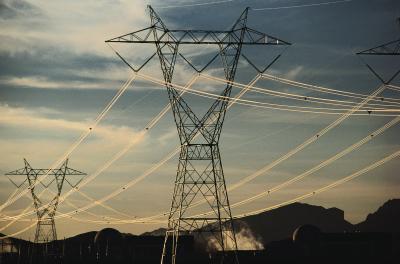Direct current - DC - electricity is used by us every day. If you see a blocky black thing on a power cord, that is a transformer and it turns alternating current (AC) electricity into DC that is used by a device.
In the early days of mass electricity, it was Tesla (and then Westinghouse) versus Edison to create an electricity standard. Edison eventually lost because high-voltage AC electricity meant it could go longer distances - and that meant fewer dirty power plants in city neighborhoods. But the device you are reading this on uses DC power, because it needs to work in a 0 and 1 state and with AC, that 1 is always changing. Tell an electrical engineer you want your two-pole transistor to work with three-phase AC and he will throw a copy of Kreyszig at you.
So Edison may not be out of it yet. Since DC is still common in devices, electricity is being transformed back from AC anyway and as more and more homes move toward personalized energy (solar panels) on homes or even smaller neighborhood plants, AC isn't needed at all.

In the future, HVDC grids may coexist with alternating current grids. Credit: UPV/EHU
And then there is high voltage direct current (HVDC), which may mean the best of both worlds. In Spain, there is a long-distance direct current line, it connects mainland Spain with the Balearic Islands. Everyone else in Spain is AC, as you would expect, as is most of the world. Other exceptions are large hydraulic power stations like the Itaipu power station in South America and the Three Gorges power station in China.
But the latest government and environmental fashion are inconsistent energy sources, like wind and solar. They are going to require a lot of new grid infrastructure and that means worry about losses and cost. A group of researchers think that should be DC. First, the inefficiency of long-distance transmission would need to be solved.
The goal of better transmission
The GISEL group at Universidad del País Vasco is working to improve the energy exchange converters between direct current lines alternating current ones.Specifically, they are working on new technology for converters known as VSCs (Voltage Source Converters). Compared with conventional technology, "the VSC has many advantages; among others, it is easier to control the power that is transmitted, and that is very important on wind farms, for example. At the same time, given the fact that direct current has great economic advantages in underwater lines, it is very appropriate for them."
However, VSC technology has a number of drawbacks: its capacity to transmit energy is lower, the energy losses are greater and it does not respond well when problems arise. For example, if there is a short circuit, the system has problems; and then there is the transmission issue.
Currently, "even though more and more energy is being produced to meet the demand, problems may arise when it comes to transmitting that energy. It is not always possible to incorporate the surplus energy produced into the already existing lines owing to their limits. In these cases, the use of direct current could solve the problem of the alternating current lines already installed, because, among other things, the HVDC lines can transmit more electrical power," explained Marene Larruskain, one of the engineers in the UPV/EHU's GISEL group.
The GISEL research group is studying how to make the features of the alternating current and direct current lines compatible. The electricity lines of alternating current are three-phase - the number of conductors are three, or multiples of that number. But HVDC lines have two poles: a positive one and a negative one.
"How are we going to divide two poles into three conductors?" wondered Larruskain. "If we use one pole for each phase, one of the conductors of the original line will remain free and part of the power will be lost. That is why a line and a half of alternating current corresponds to each pole of direct current. Even though it looks impossible, there are various ways of making this distribution.
"In the future HVDC grids are expected to coexist with alternating current grids, which are in the majority nowadays.Transmitting direct current via the currently existing lines could be a first step towards building HVDC grids."




Comments